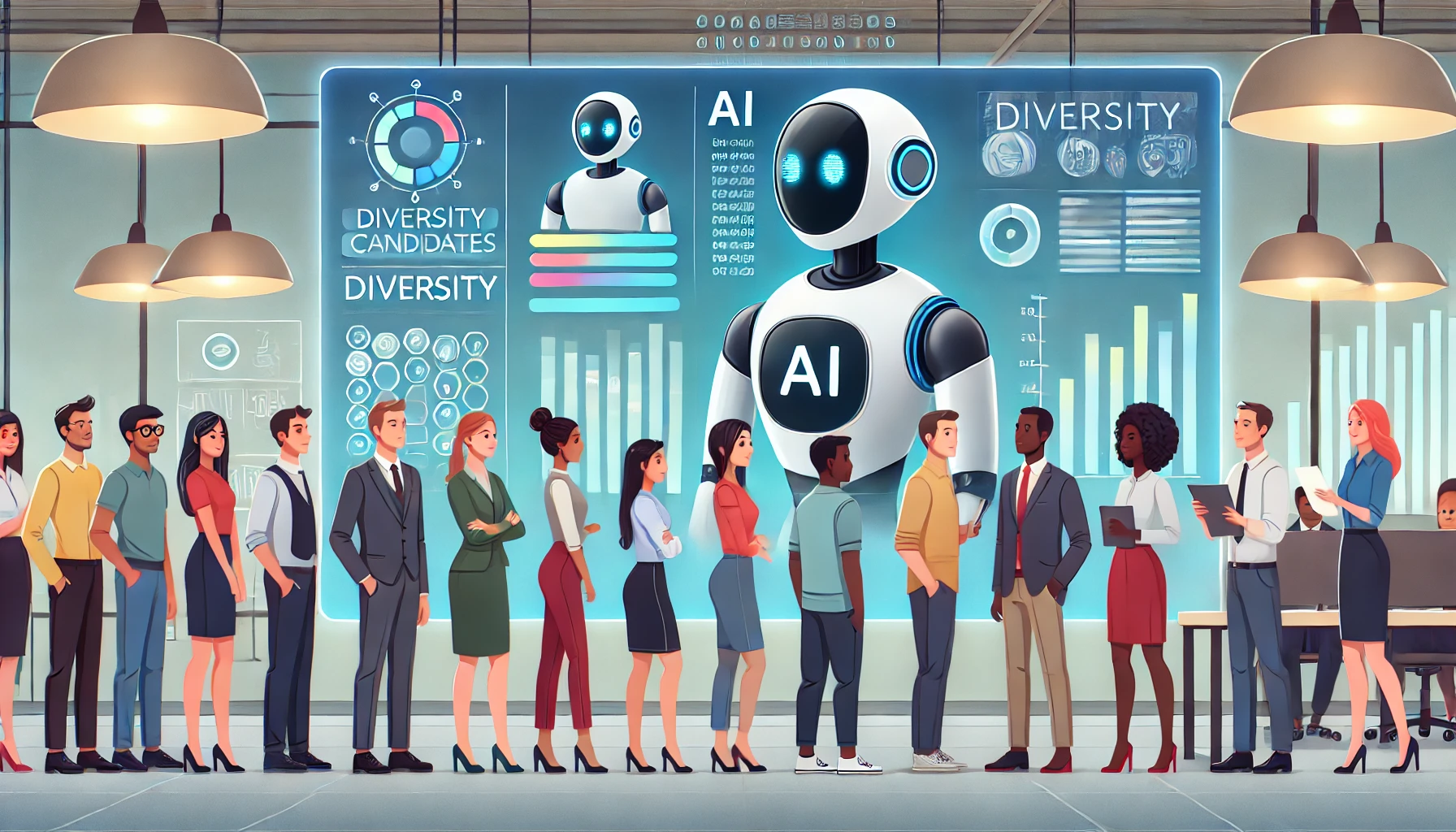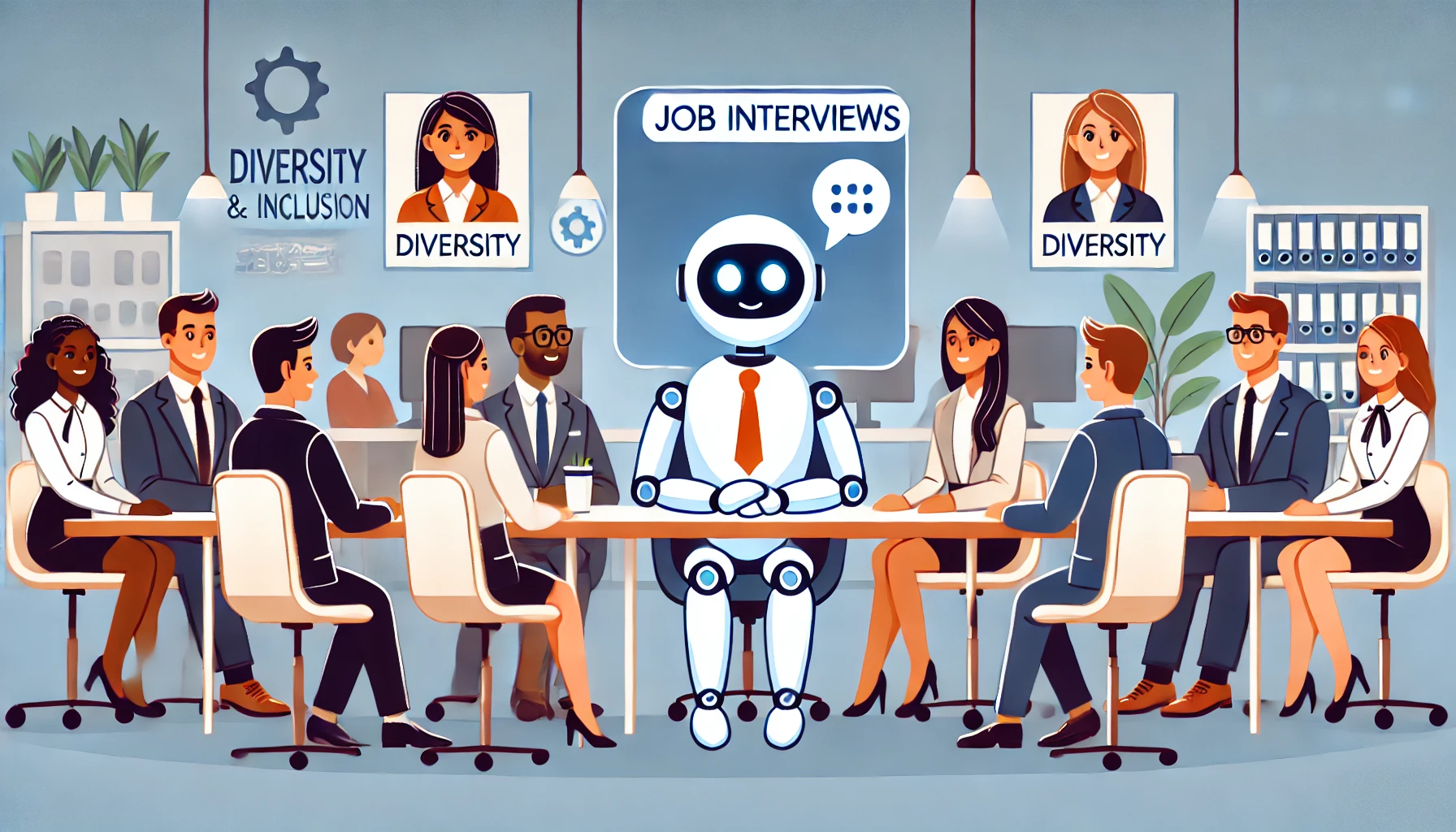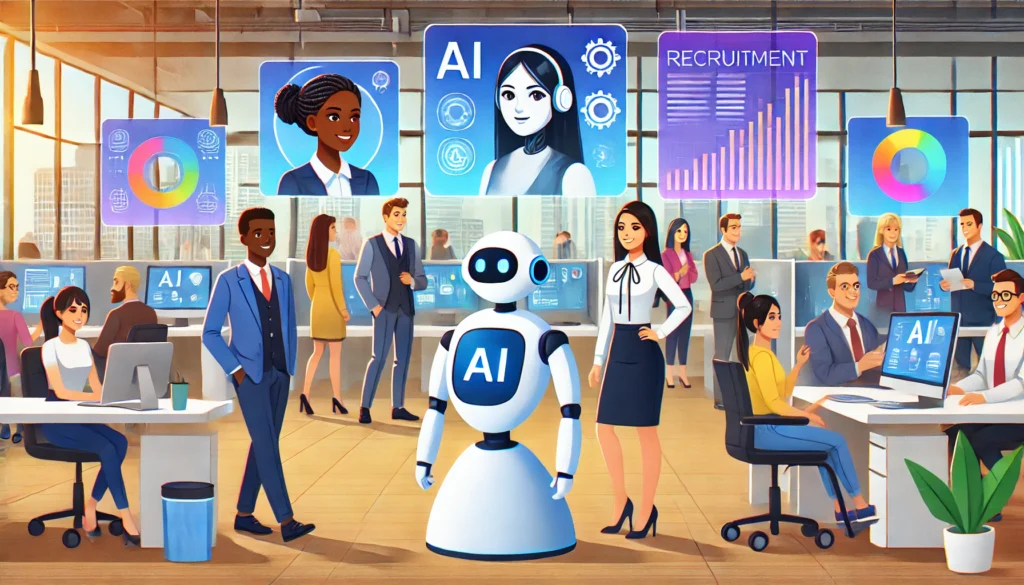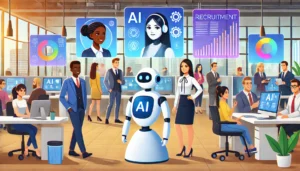Diversity and inclusion in hiring have become not only a moral imperative in the modern world of growing and constant change but also a source of competitive advantage. Research shows that organizations that incorporate a diverse workforce within their business environment are creative and adaptive as well as more profitable than their competitors. AI recruiting tools including AI recruitment bots are set to change the traditional hiring paradigm. These sophisticated technologies should help to remove prejudice, increase accessibility, and thus help to provide a fair chance to everyone. This article will share insights on how AI can be used for the enhancement of diversity and inclusion in hiring efforts and provide real-life examples and best practices of AI-driven diversity initiatives to support the arguments.
The Case for Diversity and Inclusion
Defining Diversity and Inclusion in Hiring
Equal opportunity and minority representation are now key features of most organizations’ management frameworks today. Diversity involves variations characterized by race, gender, age, sexual orientation, disability, culture, etc. While diversity focuses on the differences that exist in a society, organization, or group, inclusion refers to the state in which all persons are welcomed, accepted, and given an equal chance to access resources and opportunities. A diverse and inclusive workplace does not merely tolerate employees’ differences but also looks for ways to leverage these differences for business success.
Benefits of a Diverse and Inclusive Workforce
Many research papers have shown that diversity in the workplace is a positive development for organizations. McKinsey & Company report that gender diversity in the executive teams is correlated with higher profitability. In its research, the companies in the first quartile for gender diversity were 25% more likely to have above-average profitability compared to the firms in the fourth quartile. Likewise, organizations in the ethnic diversity top quartile had 36% more probability to provide better performance in terms of profitability than other companies.
Enhanced Innovation and Creativity
The reason that diverse teams are important is because of the fresh ideas they can bring to the table due to their different experiences. An article from Harvard Business Review notes that companies that have diverse employees are 1.7 times more likely to be the innovation leaders in their market.
Improved Decision-Making
A study by Cloverpop shows that teams with diverse members are likely to reach the right business decisions most of the time; 87% to be precise. The diverse perceptions are useful in looking at the issue from different perspectives and avoiding the biases of conforming to the group’s opinion.
Greater Employee Engagement and Retention
Positive organizational culture and practices that embrace the disabled make employees more satisfied and reduce employee turnover. Deloitte’s study revealed that companies with inclusion policies outperform their counterparts by 2%.
Broader Talent Pool
Focusing on diversity and inclusion in hiring contributes to the increase of the talent pool by attracting more qualified applicants. This is especially important in industries that are experiencing skills shortages.
Enhanced Company Reputation
Research has shown that those organizations that are highly committed to D&I are generally appreciated by the public and other potential consumers or employees. It can also help in retaining clients and building up the employer brand.
Try PreScreen AI for Free
Don’t miss out on the opportunity to experience all the benefits of AI-powered interviews firsthand – try our free trial today.
Challenges in Achieving Diversity and Inclusion in Hiring Through Traditional Methods
Despite the clear benefits, achieving true diversity and inclusion in hiring using traditional recruitment methods poses significant challenges:
Unconscious Bias
A major challenge companies face in their traditional recruitment impacting diversity and inclusion is unconscious bias. Employers subconsciously tend to filter for people like themselves. Research has demonstrated that employment applications with Anglo-Saxon names are granted 50 percent more interviews than similar employment applications with Black-sounding names.
Homogeneous Networks
Recruiters often rely on their professional networks to source candidates. These networks tend to be homogeneous, limiting the diversity of potential applicants.
Cultural Fit
The term ‘culture fit’ can sometimes be abused by recruiters. On one hand, it is crucial to find people who share the company’s values, although, on the other hand, the focus on such aspects can contribute to the existence of homogeneity.
Limited Outreach
With the use of traditional recruitment practices, the lack of diversity in the applicant pool can be attributed to job postings and recruitment activities that do not target diverse candidates.
Inadequate Metrics and Accountability
Sadly, many organizations have poor mechanisms for evaluating their D&I programs. The lack of definite data and responsibility makes it rather difficult to track the success and efficiency, as well as the further development and changes to be made.
All in all, it can be concluded that traditional methods of recruitment entail several barriers to maintaining diversity and inclusion шт ршкштп while the use of AI promises to be a solution to these problems.
Leveraging AI for Diversity and Inclusion in Hiring

AI has the potential to revolutionize the hiring process by identifying and eliminating biases in recruitment that can hinder diversity and inclusion. Here’s how AI can address these issues:
1. Anonymizing Candidate Information
AI can exclude candidates’ details like name, gender, age, and ethnicity from their CVs and applications. This helps in eliminating bias in recruitment as well as any other prejudicial factors.
2. Standardizing Evaluations
AI tools standardize the hiring criteria. Since objective criteria are applied to the assessment of the candidates and selection of the employees, it minimizes the chances of biased decision-making.
4. Analyzing Job Descriptions
AI tools for diversity can scan through job descriptions to filter out undesirable words that will discourage specific demographics from applying.
5. Predictive Analytics
AI can apply predictive analytics on the hiring data to determine where the biases may be showing up. Thus, AI can help spotlight these areas to spur companies to correct the problem and hire more fairly.
6. Interviewing and Assessments
AI-based interview tools estimate the quality of the candidates’ answers according to the set of criteria. This helps in eliminating biases in recruitment, as every candidate is given equal opportunities to showcase their skills.
Try PreScreen AI for Free
Don’t miss out on the opportunity to experience all the benefits of AI-powered interviews firsthand – try our free trial today.
Examples of AI Tools for Diversity
1. Pymetrics
Pymetrics incorporates games and artificial intelligence to evaluate candidate’s cognitive and emotional skills. Instead of reviewing the CVs, Pymetrics assesses candidates based on their innate characteristics and skills and finds them a job that they can do best.
2. HireVue
HireVue incorporates Artificial Intelligence in the evaluation of video interview responses, facial expressions, and voice intonations. The tool brings uniformity to the interview process and has quantifiable data, thus minimizing the effects of the interviewer’s subjectivity.
3. Textio
Textio assists organizations in coming up with more inclusive job descriptions. By examining the structure and content of language and providing recommendations for changes, Textio guarantees that the vacancy announcements will be appealing to applicants of different genders, ethnicities, and ages.
4. Blendoor
Blendoor can be used to blind candidate information, especially during the first stages of selection. This approach helps organizations to keep their attention on the relevant skills and qualifications of the candidates eliminating biases in recruitment.
5. Beamery
Beamery is an AI talent engagement platform that enables business entities to develop a diverse talent pool. It helps to match underrepresented candidates with the vacancies so that companies have a large pool of candidates to choose from.
How AI Recruitment Bots Promote Diversity and Inclusion in Hiring

Conversational AI recruitment bots like PreScreen AI offer a promising solution to hiring challenges by automating and standardizing the initial prequalification of candidates. By leveraging advanced technologies such as natural language processing (NLP) and machine learning, these bots help in eliminating biases in recruitment and create a more equitable hiring environment. Here’s how AI recruitment bots contribute to diversity and inclusion in hiring:
Reducing Unconscious Bias
AI recruitment bots analyze candidates’ CVs and job requirements to produce a broad range of personalized questions that would allow the system to test various skills and competencies. At the same time, AI recruitment bots conduct structured interviews in voice or chat, unifying the interview experience for each candidate, eliminating biases in recruitment, and giving all candidates from different backgrounds a chance to show what they are capable of.
It should be noted that AI recruitment bots are programmed to identify biased language and avoid any type of questions that might be framed in a biased form that favors one party over the others.
Enhancing Accessibility
With AI recruitment bots, candidates can be interviewed at their own convenience regardless of their time zone or schedule. This inclusivity helps in reaching out to a larger pool of candidates.
Objective Data Analysis
Certain AI recruitment bots (such as PreScreen AI) conduct blind interviews in which PII is concealed from the system.
AI recruitment bots analyze the interview data without any bias based on facts related to the candidates’ responses. This approach contributes to eliminating biases in recruitment and allows for choosing the most suitable candidates depending on their achievements and skills.
Try PreScreen AI for Free
Don’t miss out on the opportunity to experience all the benefits of AI-powered interviews firsthand – try our free trial today.
Case Studies: Companies Successfully Using AI Tools for Diversity and Inclusion
Several companies have successfully leveraged AI tools for diversity and inclusion efforts:
Unilever
Unilever applied artificial intelligence to its recruitment so it did not consider the gender of the applicant. This way, with the help of AI in selecting the resumes and the preliminary interviews, Unilever guaranteed that the candidates were selected based on their qualifications and experiences without discriminating against their gender, race, or other characteristics. This approach resulted in a vast improvement in the company’s diversity among its employees.
Goldman Sachs
Goldman Sachs deploys AI tools for diversity and inclusion as core values of the financial institution. The company’s hiring strategy is skills and experience-based, and applicant data is stripped of identification details during the early stages of the process. This has helped Goldman Sachs to attract more diverse applicants to its organization.
IBM
In its recruitment processes, IBM has adopted AI to increase diversity and eliminate biases. The company uses AI tools to scan job descriptions for bias in the language and to filter candidates by their relevant skills. Their approach has improved IBM’s diverse hiring outcomes and therefore increased D&I within the workplace.
PepsiCo
PepsiCo has recently adopted AI recruitment bots that help in hiring employees with little or no interference from human professionals. These intelligent AI tools identify applicants’ competencies and their fit within the company’s culture, which helps improve the company’s diversity.
Strategies for Ensuring AI-Driven Diversity Initiatives Succeed
AI-driven diversity initiatives can help organizations improve the level of diversity and inclusion when properly integrated into the company. However, for these programs to work, it is crucial to adopt strategies that would enhance the use of AI tools for diversity while avoiding some of the pitfalls. Here are key strategies for success:
Establish Clear Objectives and Metrics
Set specific, measurable, achievable, relevant, and time-bound (SMART) goals for your AI-driven diversity initiatives. Clear objectives help guide the implementation and evaluation of AI tools for diversity. Identify key performance indicators (KPIs) to measure the success of your AI-driven diversity initiatives. Metrics might include the diversity of applicant pools, the hiring rate of underrepresented groups, and employee retention rates.
Foster an Inclusive Culture
The organization should implement and strictly adhere to policies that foster positive workplace diversity. This includes offering diversity training to individuals within the company and ensuring that minorities and other underrepresented populations are welcomed and supported.
Promote Inclusive Hiring Practices
Use AI tools for diversity to create inclusive job descriptions that attract a diverse range of candidates. Implement blind recruitment practices to reduce biases in the initial stages of hiring. Ensure that AI tools support these practices effectively.
Invest in Training and Development
Educate the HR teams on how to implement the AI tools in the most efficient manner. Make sure that they comprehend the strengths and weaknesses of applying AI tools for diversity. Promote a lifelong learning culture. Ensure that you are knowledgeable about the current trends in the application of AI and diversity measures and incorporate them into your approach.
Leverage Data-Driven Insights
Use AI to analyze data on hiring processes, employee demographics, and workplace culture. Identify trends and areas for improvement. Base decisions on data-driven insights to enhance the effectiveness of diversity initiatives. Use data to refine strategies and address any gaps.
Regularly Review and Adapt Strategies
Ensure that you periodically assess the results of the AI-driven diversity initiatives. Adjust operational techniques according to the feedback received and the results achieved. The landscape of AI and diversity is constantly evolving, and strategies should evolve accordingly.
Collaborate with External Experts
Consult with outside experts like diversity consultants and AI ethicists to make sure your measures are properly designed. Assess your AI-driven diversity initiatives against the standards and guidelines of other organizations. Understand how other organizations that have adopted AI-driven diversity intiatives have done it.
Try PreScreen AI for Free
Don’t miss out on the opportunity to experience all the benefits of AI-powered interviews firsthand – try our free trial today.
Final Thoughts
Diversity and inclusion (D&I) are no longer just moral issues in the contemporary world, but they are strategic business issues. A diverse workforce implies that different ideas are likely to be brought to the table, which fosters creativity and also improves decision-making, thus increasing the company’s profitability and reputation in the market. However, conventional sourcing strategies fail to deliver effective D&I because they include implicit biases, people’s closed networks, and other drawbacks.
AI tools especially the AI interviewing bots provide a new-age solution to these issues. By introducing standard and objective evaluations, removing candidate’s personal information, and encouraging equal opportunities, AI can reduce biases that negatively affect diversity. PreSreen AI, Pymetrics, Hirevue, Textio – all these applications are changing hiring processes, and making it more fair and diverse.
Implementing AI for recruitment is not only relevant to the current focus on the D&I initiative but also beneficial concerning its implementation and application. For instance, Unilever, Goldman Sachs, IBM, and PepsiCo have adopted AI tools for diversity and have created diverse and innovative organizational cultures.
As a result, for organizations desiring to progress their D&I initiatives, the adoption of AI interviewing bots constitutes a sound strategy. These tools can assist in eliminating biases in recruitment and give all candidates a fair equal shot at getting the job. The implementation of AI tools for diversity demonstrates how organizations can assemble diverse teams and create a culture of innovation to drive improved business results. The time to act is now—start exploring the AI interviewing bots and move forward to a more diverse and inclusive approach in hiring practices.

